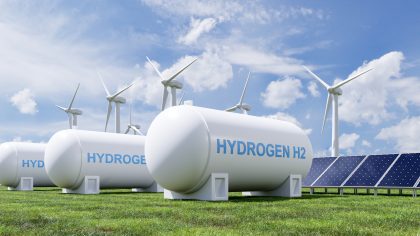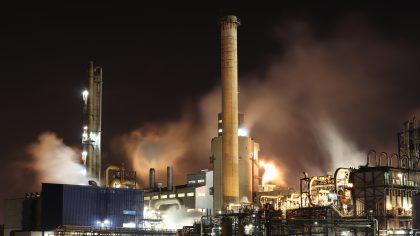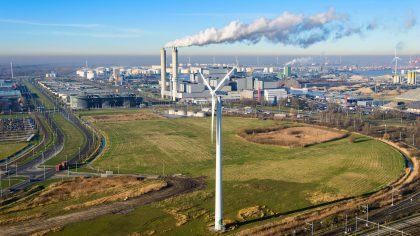All information in the datasheets is also available in ESDL (Energy System Description Language). You can find them in the Energy Data Repository (EDR).
Anaerobic digestion of wet biomass for heat generation
Wet biomass in this category refers to organic wastes such as residual flows from the food and beverage industry, vegetable, fruit and garden wastes, or organic wet faction of household wastes. The residual flows are mentioned in the NTA8003 and published by the Netherlands Standardization Institute. For this category, a minimum biogas production of 25 Nm3 (natural gas equivalent) for tonne feedstock is requested. Manure is not included in this category.
The biomass is fermented in a state-of the-art anaerobic digestion installation to produce biogas. The installation consists of storage and pre-treatment, digestion installations, combustion of biogas and post treatment and storage of digestate (i.e. dewatering, drying, in some cases hygenisation and storage). In average the residence time of the organic waste in the digestor is around 30 days and biogas is produced.
Biogas consists mainly of methane (in average 60%) and carbon dioxide (33-38%) in addition to contaminants such as sulphur, water vapor and oxygen. The biogas is desulfurized and it is fed into a biogas boiler to produce heat. Mostly steam boilers are used for the industrial applications. The Activities Decree on emissions for combustion plants requires that the boiler installations with a nominal thermal input power of >1 MWth comply with the emission limit values stated in the Decree.
Downloads
Anaerobic digestion of wet biomass for heat generationGerelateerde publicaties

Effecten van waterstofimport op de industrie in Nederland
Exploration of the effects of (partially) replacing Dutch fertiliser and iron and steel production with imports

De weg naar toekomstbestendige petrochemie
Exploration of transition strategies in Dutch refineries and organic chemicals industry for climate policy

Toename aandeel hernieuwbare warmte
Haalbaarheid van de RED III-doelstellingen met het huidige beleid